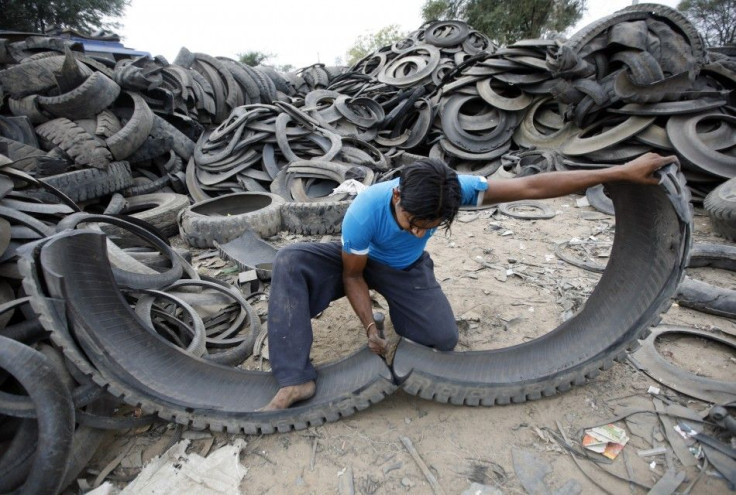India Central Bank Cuts Repo, Reverse Repo Rates, CRR Unchanged; Rules Out Further Easing

India's central bank, the Reserve Bank of India cut key interest rates for the second time in three months in an attempt to boost economic growth, which has hit a decade low. However, the central bank warned that scope for a further rate cut is limited, as inflation persists beyond the comfort levels.
The country’s central bank is trying to strike a balance between the conflicting pressures from high inflation and a need to spur lending by banks to boost economic growth.
In its mid-quarter monetary policy review Tuesday, the reserve bank cut the rate at which the RBI lends money to commercial banks by 25 basis points to 7.50 percent from 7.75 percent and the reverse repo rate to 6.5 percent from 7 percent. However, the RBI left Cash Reserve Ratio — the amount of funds that banks have to keep with the RBI — untouched at 4 percent.
The last rate cut in January saw RBI slashing the lending rate by 25 basis points.
A reduction in the repo rate makes borrowing from the RBI cheaper, prompting banks to ease the cost of loans to customers for home and car financing and borrowing to expand business operations, among other types of consumer lending.
India’s bench mark Wholesale Price Index Inflation edged up to 6.8 per cent in February 2013 from 6.6 per cent in January. The central bank expressed its concern over spiraling food price-driven inflation and a record-high current account deficit in its mid-quarter view and said there is no room for further monetary policy easing, although there is pressure from the government and industry to cut rates.
"Even as the policy stance emphasis addressing the growth risks, the headroom for further monetary easing remains quite limited," the RBI said in its statement.
“Although there has been notable softening of non-food manufactured products inflation, food inflation remains high, driving a wedge between wholesale price and consumer price inflation, and is exacerbating the challenge for monetary management in anchoring inflationary expectations,” the bank said.
The RBI in its January policy review had reduced India’s growth projections for the current year to 5.5 percent from 5.8 percent, while the country’s GDP growth third quarter of 2012-13 stood at 4.5 percent — the weakest in 15 quarters. The bank made no projections for GDP growth for the coming fiscal year (FY13/ 14) in the current policy review, but observed that economic growth is slipping towards 5 percent.
On inflation, the RBI said it expects headline inflation will continue to remain range bound, with a moderation in non-food manufactured products.
“The headline inflation is expected to be range-bound around current levels over 2013-14 in view of sectoral demand-supply imbalances, the ongoing corrections in administered prices and their second-round effects,” RBI said in its guidance summary.
The Central Bank reiterated its deficit concerns and emphasized on the need to raise the competitiveness of exports, and reduce demand for unproductive imports.
Meanwhile, economists believe that there can be further rate cuts towards the end of the fiscal year.
“Looking ahead, the market consensus is for another 25bp cut before year-end. However, we expect a long policy hold. While concerns about the pace of economic growth are not about to go away, the central bank has begun placing increasing weight to fears that still-high headline inflation is raising risks of broader macroeconomic instability,” Aninda Mitra, economist with Capital Economics said.
"RBI has continued to maintain limited room for monetary easing. I expect another 25-50 basis points of cuts in 2013," Anjali Verma, economist at PhillipCapital in Mumbai told Reuters.
Indian stock markets fell Tuesday, following the DMK party’s — a key ally of the ruling UPA coalition — decision to withdraw support for the government.
© Copyright IBTimes 2024. All rights reserved.












